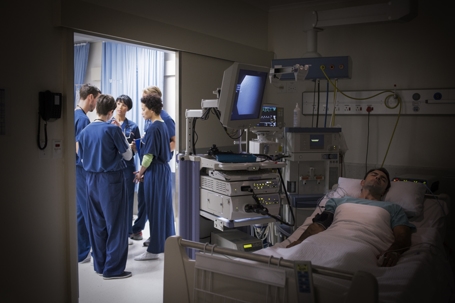Emergency rooms are essential for providing immediate care to those who require it, but unfortunately, there are cases where patients are misdiagnosed or suffer adverse events as a result.
In the United States alone, it's estimated that 7.4 million (5.7%) of the 130 million annual emergency department visits result in misdiagnosis, with 2.6 million (2.0%) of patients suffering adverse events. These errors can result in serious harm, with 370,000 (0.3%) of patients experiencing serious harm as a result of diagnostic error. Keep reading to learn about seven common emergency room errors to be aware of.
1. Triage Mistakes
Triage is the process of prioritizing patients based on the severity of their condition.
There are two types of triage errors including:
- Undertriage: This medical error occurs when the level of urgency of a patient’s condition is underestimated. They may receive less urgent health services and, as a result, can have worsened conditions.
- Overtriage: Overtriage happens when there is an inappropriate allocation of healthcare services to patients whose needs are less urgent. This can lead to unnecessary usage of scarce health resources and harmful investigations and treatments that these individuals do not need.
Research has revealed that triage error rates are higher in emergency departments compared to primary care. Studies conducted across multiple centers showed that triage accuracy was only approximately 60%, with an undertriage rate of around 23%.
2. Misdiagnosis
Misdiagnosis is a serious issue in emergency rooms that can have dire consequences for patients. When medical professionals fail to properly diagnose a patient's condition, they may not receive the treatment they need, which can lead to worsened symptoms or even death.
The top five misdiagnosed conditions include:
- Stroke
- Myocardial infarction
- Aortic aneurysm/dissection
- Spinal cord compression/injury
- Venous thromboembolism
As such, if you feel your diagnosis does not match your symptoms, do not hesitate to ask for a second opinion or further testing.
3. Medication Errors
Medication errors can happen at various stages, including administering the wrong medication, incorrect dosage, or failure to account for drug interactions.
According to a study of anonymous medication errors reported across nearly 500 emergency departments, over 13,900 medication errors were reported in a period of four years. The error rate came out to 78 reports per 100,000 patient visits. The most common culprits of these errors were found to be physicians and nurses, accounting for 24% and 54% of the reported errors, respectively.
4. Delayed Treatment
Delays in treatment can occur for a variety of reasons, such as understaffing, miscommunication, diagnostic errors, failing to diagnose or prioritizing a less urgent case.
Delays in arriving and receiving treatment at emergency rooms can have serious consequences for patients' health. Unfortunately, a study conducted in 2019 found that delayed arrival was present in 27.8% of the 95,025 consultations analyzed, while delayed treatment affected 27.2% of the cases.
5. Unsanitary Conditions
Emergency rooms are expected to maintain a clean and sterile environment, but this is not always the case. Inadequate sanitation can lead to infections or other complications. Be vigilant about the cleanliness of your surroundings, and don't be afraid to ask for a change of linens or re-sanitizing equipment if you're uncomfortable.
6. Inadequate Communication
Communication is key in emergency rooms, but it's not uncommon for communication to suffer. A recent study found that emergency department physicians dedicated 10% of their time to multiple conversations, and an additional 31% to addressing interruptions.
Unfortunately, these interruptions can lead to miscommunication, which can result in incorrect diagnoses, improper discharges, and other issues.
7. Testing/Lab Errors
Patient care in the emergency department involves more than just doctors and nurses. In order to accurately diagnose a condition, doctors often require multiple tests. These tests are conducted by medical technicians, who are responsible for testing samples after receiving a request from the doctor. However, within this period, there is room for medical malpractice to occur.
Testing/lab errors can include:
- Improper testing
- Miscommunicating test results
- Misinterpretation of test results
- Ordering incorrect tests
Although emergency rooms are intended to save lives and provide prompt medical attention, errors can occur. To protect yourself or your loved ones, awareness of common mistakes is critical.
If you or someone you know has suffered from an emergency room error, don't hesitate to contact Brett H. Oppenheimer, PLLC. We can assist you in pursuing the compensation you deserve and holding accountable those responsible for medical malpractice.
Contact us today at (502) 242-8877 or reach out to us online.

